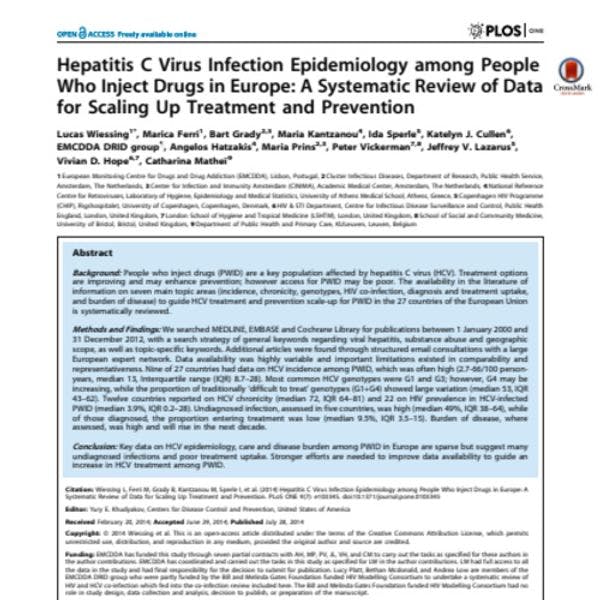Hepatitis C virus infection epidemiology among people who inject drugs in Europe: A systematic review of data for scaling up treatment and prevention
People who inject drugs (PWID) are a key population affected by the hepatitis C virus (HCV). Treatment options are improving and may enhance prevention; however access for PWID may be poor.
To coincide with World Hepatitis Day, the open-access online journal PLOS ONE publishes the results of an EMCDDA systematic review on data for the scaling up of HCV treatment and prevention for PWID across the European Union.
The study, one of the largest conducted on this topic and involving over 80 collaborators, concludes that data on HCV epidemiology, care and disease burden among PWID in Europe, while sparse, suggest many undiagnosed infections and poor treatment uptake. The burden of disease, where assessed, was high and is expected to rise in the next decade.
The authors reviewed the published literature from 2000, as well as data provided by the agency’s drug-related infectious diseases (DRID) expert network. Data availability was found to be highly variable across countries and topic areas, while important limitations exist both in comparability and representativeness. Below are some of the findings:
- HCV incidence among PWID was often high, with over one in ten PWID newly infected per year of exposure (range 2.7–66).
- Chronicity rates vary both above and under the expected 75% (range 53–97%), suggesting the existence of country differences.
- Genotypes 1 and 3 predominate among PWID, but 4 appears to be increasing, while the proportion of ‘difficult to treat’ genotypes (1+4) shows large variation (17–91%, median 53%).
- HIV prevalence in HCV-infected PWID varies widely (0–70%, median 3.9%).
- Half of the chronically infected PWID were unaware of their infection (median 49%, range 24–76%), and, of those diagnosed, only one in ten entered treatment for Hepatitis C (median 9.5%, range 1–19%).
The study concludes that stronger efforts are needed to improve data availability to guide the scale-up of HCV treatment among PWID.
Keep up-to-date with drug policy developments by subscribing to the IDPC Monthly Alert.
